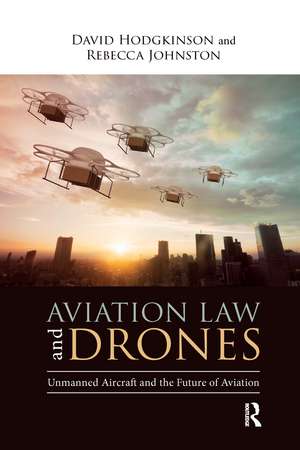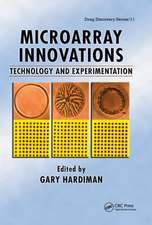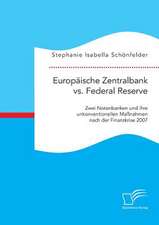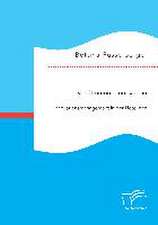Aviation Law and Drones: Unmanned Aircraft and the Future of Aviation
Autor David Hodgkinson, Rebecca Johnstonen Limba Engleză Paperback – 30 sep 2020
Aviation Law and Drones: Unmanned Aircraft and the Future of Aviation traces the development of aviation laws and regulations, explains how aviation is regulated at an international and national level, considers the interrelationship between rapidly advancing technology and legislative attempts to keep pace, and reviews existing domestic and international drone laws and issues (including safety, security, privacy and airspace issues). Against this background, the book uniquely proposes a rationale for, and key provisions of, guiding principles for the regulation of drones internationally – provisions of which could also be implemented domestically. Finally, the book examines the changing shape of our increasingly busy skies – technology beyond drones and the regulation of that technology. The world is on the edge of major disruption in aviation – drones are just the beginning.
Given the almost universal interest in drones, this book will be of interest to readers worldwide, from the academic sector and beyond.
| Toate formatele și edițiile | Preț | Express |
|---|---|---|
| Paperback (1) | 315.57 lei 43-57 zile | |
| Taylor & Francis – 30 sep 2020 | 315.57 lei 43-57 zile | |
| Hardback (1) | 997.77 lei 43-57 zile | |
| Taylor & Francis – 29 mai 2018 | 997.77 lei 43-57 zile |
Preț: 315.57 lei
Nou
Puncte Express: 473
Preț estimativ în valută:
60.38€ • 63.21$ • 49.96£
60.38€ • 63.21$ • 49.96£
Carte tipărită la comandă
Livrare economică 07-21 aprilie
Preluare comenzi: 021 569.72.76
Specificații
ISBN-13: 9780367669843
ISBN-10: 0367669846
Pagini: 176
Dimensiuni: 156 x 234 x 13 mm
Greutate: 0.27 kg
Ediția:1
Editura: Taylor & Francis
Colecția Routledge
Locul publicării:Oxford, United Kingdom
ISBN-10: 0367669846
Pagini: 176
Dimensiuni: 156 x 234 x 13 mm
Greutate: 0.27 kg
Ediția:1
Editura: Taylor & Francis
Colecția Routledge
Locul publicării:Oxford, United Kingdom
Public țintă
Professional and Professional ReferenceNotă biografică
David Hodgkinson is a partner at HodgkinsonJohnston and an associate professor at the University of Western Australia. He is the author of books and numerous journal articles on aviation and climate change, and was Director of Legal at IATA, the organisation of the world’s airlines.
Rebecca Johnston is a partner at aviation and aerospace law firm, HodgkinsonJohnston, and teaches at the University of Western Australia. She is admitted to practise law in Australia and New York. Together with David Hodgkinson, she is the author of International Air Carrier Liability, Safety and Security (Routledge).
Descriere
Written by practitioners in aviation law, this book analyses how aviation is regulated at national and international levels, examining our busy skies and providing expert analysis on how technological developments in aviation can and will be regulated.
Cuprins
Preface*
Foreword*
Introduction*
Acronyms*
1 DRONES, INNNOVATION AND THE CHALLENGE FOR LAW MAKERS*
1.1 The Drone Revolution *
1.1.1 Definition *
1.1.2 History *
1.1.3 Turning Points *
1.2 Keeping Pace with Technology *
1.2.1 Current Use of Drones and The Pace of Technological Growth *
1.2.2 Drones – Some Challenges *
1.2.3 Current Regulation of Drones *
1.2.4 Limitations of Current Regulation of Drones *
1.3 Challenges for Law Makers *
1.3.1 Balancing Risks and Benefits *
1.3.2 Law, Technology and Retrofitting *
1.3.3 Problems of Enforcement *
2 EXISTING DRONE REGULATION AND ITS ISSUES*
2.1 Introduction *
2.2 Drones – Challenges *
2.2.1 Privacy Issues *
2.2.2 Safety and Security Issues *
2.3 Current Domestic Regulations *
2.3.1 Operational Rules *
2.3.2 Safety Regulations *
2.3.3 Security Regulations *
2.3.4 Insurance *
2.3.5 Registration *
2.3.6 Licensing *
2.4 Current International Regulations *
2.4.1 Introduction *
2.4.2 The Global Regulatory Regime *
2.4.3 European Union *
2.5 Making Space for Drones *
2.5.1 Airspace issues *
2.5.2 Enforcement issues *
2.5.3 Integration *
2.6 Industry Comment *
3 DEVELOPMENT OF AVIATION LAWS AND REGULATIONS*
3.1 INTRODUCTION *
3.2 FROM PARIS TO CHICAGO *
3.2.1 ORIGINS OF FLIGHT *
3.2.2 THE 1919 PARIS CONVENTION *
3.2.3 THE CENTRAL ROLE OF AIRSPACE SOVEREIGNTY *
3.2.4 THE 1944 CHICAGO CONVENTION *
3.2.5 THE BASIC PRINCIPLES OF THE CHICAGO CONVENTION *
3.2.6 LIBERALISATION OF AIR SERVICES, AND THE RIGHT TO FLY POST-CHICAGO *
(THE DEVELOPMENT OF FURTHER FREEDOMS IN THE AIR) *
3.3 FROM WARSAW TO MONTREAL *
3.3.1 THE WARSAW SYSTEM *
3.3.2 THE 1929 WARSAW CONVENTION *
3.3.3 THE HAGUE PROTOCOL 1955 *
3.3.4 THE GUADALAJARA CONVENTION OF 1961 *
3.3.5 THE MONTREAL AGREEMENT OF 1966 *
3.3.6 THE GUATEMALA CITY PROTOCOL OF 1971 *
3.3.7 THE MONTREAL ADDITIONAL PROTOCOLS OF 1975 *
3.3.8 THE MONTREAL CONVENTION OF 1999 *
3.3.9 FURTHER DEVELOPMENTS *
3.4 AVIATION SAFETY AND SECURITY *
3.4.1 COMPENSATION CONVENTIONS FOR DAMAGE TO THIRD PARTIES *
4 REGULATION OF AVIATION AT THE NATIONAL AND INTERNATIONAL LEVELS*
4.1 Introduction *
4.2 Treaties and International Instruments *
4.2.1 The Vienna Convention on the Law of Treaties *
4.2.2 Treaties *
4.2.3 Customary International Law *
4.2.4 Guiding Principles *
4.2.5 Breaches of international aviation law *
4.3 Domestic Implementation of International Law *
4.3.1 Relationship between International and Domestic Law *
4.3.2 Monism and Dualism *
4.3.3 Australia’s position *
4.3.4 Implementation of international treaties at the sub-national level *
4.3.5 Differences between federal and unitary systems *
4.4 Domestic Law and Sovereignty *
5 GUIDING PRINCIPLES*
5.1 Rationale *
5.2 Principles for the Regulation of Drones Internationally by States *
5.2.1 Preamble *
5.2.2 Introduction *
5.2.3 Operative Provisions *
5.2.4 General Obligations *
5.2.5 Implementation *
5.3 A Multilateral Agreement to Regulate Drones? *
6 THE FUTURE OF DRONES*
6.1 INTRODUCTION *
6.2 KEY DEVELOPMENTS *
6.2.1 MINIATURISATION *
6.2.2 AUTONOMY *
6.2.3 SWARMING *
6.2.4 FLIGHT EFFICIENCY AND ENDURANCE *
ADEQUACY OF BATTERIES IN FUTURE PARADIGMS *
6.2.5 ENVIRONMENTALLY-FRIENDLY *
6.3 EXAMPLES *
6.3.1 ROBOTIC FLYING BIRDS AND INSECTS *
6.3.2 DRONE COPTERS *
6.3.3 AUTONOMOUS FLYING CARS *
6.3.4 AIR TRAFFIC MANAGEMENT SYSTEMS AND SUPPORTING INFRASTRUCTURE *
6.3.5 VEHICLES FOR PACKAGE DELIVERY *
6.4 PILOTLESS COMMERCIAL AIRCRAFT *
6.5 ISSUES FOR REGULATION GOING FORWARD *
Appendix – Principles for the Regulation of Drones Internationally by States*
PREAMBLE *
INTRODUCTION *
I. OPERATIVE PROVISIONS *
II. GENERAL OBLIGATIONS *
III. IMPLEMENTATION *
Bibliography*
Index
Foreword*
Introduction*
Acronyms*
1 DRONES, INNNOVATION AND THE CHALLENGE FOR LAW MAKERS*
1.1 The Drone Revolution *
1.1.1 Definition *
1.1.2 History *
1.1.3 Turning Points *
1.2 Keeping Pace with Technology *
1.2.1 Current Use of Drones and The Pace of Technological Growth *
1.2.2 Drones – Some Challenges *
1.2.3 Current Regulation of Drones *
1.2.4 Limitations of Current Regulation of Drones *
1.3 Challenges for Law Makers *
1.3.1 Balancing Risks and Benefits *
1.3.2 Law, Technology and Retrofitting *
1.3.3 Problems of Enforcement *
2 EXISTING DRONE REGULATION AND ITS ISSUES*
2.1 Introduction *
2.2 Drones – Challenges *
2.2.1 Privacy Issues *
2.2.2 Safety and Security Issues *
2.3 Current Domestic Regulations *
2.3.1 Operational Rules *
2.3.2 Safety Regulations *
2.3.3 Security Regulations *
2.3.4 Insurance *
2.3.5 Registration *
2.3.6 Licensing *
2.4 Current International Regulations *
2.4.1 Introduction *
2.4.2 The Global Regulatory Regime *
2.4.3 European Union *
2.5 Making Space for Drones *
2.5.1 Airspace issues *
2.5.2 Enforcement issues *
2.5.3 Integration *
2.6 Industry Comment *
3 DEVELOPMENT OF AVIATION LAWS AND REGULATIONS*
3.1 INTRODUCTION *
3.2 FROM PARIS TO CHICAGO *
3.2.1 ORIGINS OF FLIGHT *
3.2.2 THE 1919 PARIS CONVENTION *
3.2.3 THE CENTRAL ROLE OF AIRSPACE SOVEREIGNTY *
3.2.4 THE 1944 CHICAGO CONVENTION *
3.2.5 THE BASIC PRINCIPLES OF THE CHICAGO CONVENTION *
3.2.6 LIBERALISATION OF AIR SERVICES, AND THE RIGHT TO FLY POST-CHICAGO *
(THE DEVELOPMENT OF FURTHER FREEDOMS IN THE AIR) *
3.3 FROM WARSAW TO MONTREAL *
3.3.1 THE WARSAW SYSTEM *
3.3.2 THE 1929 WARSAW CONVENTION *
3.3.3 THE HAGUE PROTOCOL 1955 *
3.3.4 THE GUADALAJARA CONVENTION OF 1961 *
3.3.5 THE MONTREAL AGREEMENT OF 1966 *
3.3.6 THE GUATEMALA CITY PROTOCOL OF 1971 *
3.3.7 THE MONTREAL ADDITIONAL PROTOCOLS OF 1975 *
3.3.8 THE MONTREAL CONVENTION OF 1999 *
3.3.9 FURTHER DEVELOPMENTS *
3.4 AVIATION SAFETY AND SECURITY *
3.4.1 COMPENSATION CONVENTIONS FOR DAMAGE TO THIRD PARTIES *
4 REGULATION OF AVIATION AT THE NATIONAL AND INTERNATIONAL LEVELS*
4.1 Introduction *
4.2 Treaties and International Instruments *
4.2.1 The Vienna Convention on the Law of Treaties *
4.2.2 Treaties *
4.2.3 Customary International Law *
4.2.4 Guiding Principles *
4.2.5 Breaches of international aviation law *
4.3 Domestic Implementation of International Law *
4.3.1 Relationship between International and Domestic Law *
4.3.2 Monism and Dualism *
4.3.3 Australia’s position *
4.3.4 Implementation of international treaties at the sub-national level *
4.3.5 Differences between federal and unitary systems *
4.4 Domestic Law and Sovereignty *
5 GUIDING PRINCIPLES*
5.1 Rationale *
5.2 Principles for the Regulation of Drones Internationally by States *
5.2.1 Preamble *
5.2.2 Introduction *
5.2.3 Operative Provisions *
5.2.4 General Obligations *
5.2.5 Implementation *
5.3 A Multilateral Agreement to Regulate Drones? *
6 THE FUTURE OF DRONES*
6.1 INTRODUCTION *
6.2 KEY DEVELOPMENTS *
6.2.1 MINIATURISATION *
6.2.2 AUTONOMY *
6.2.3 SWARMING *
6.2.4 FLIGHT EFFICIENCY AND ENDURANCE *
ADEQUACY OF BATTERIES IN FUTURE PARADIGMS *
6.2.5 ENVIRONMENTALLY-FRIENDLY *
6.3 EXAMPLES *
6.3.1 ROBOTIC FLYING BIRDS AND INSECTS *
6.3.2 DRONE COPTERS *
6.3.3 AUTONOMOUS FLYING CARS *
6.3.4 AIR TRAFFIC MANAGEMENT SYSTEMS AND SUPPORTING INFRASTRUCTURE *
6.3.5 VEHICLES FOR PACKAGE DELIVERY *
6.4 PILOTLESS COMMERCIAL AIRCRAFT *
6.5 ISSUES FOR REGULATION GOING FORWARD *
Appendix – Principles for the Regulation of Drones Internationally by States*
PREAMBLE *
INTRODUCTION *
I. OPERATIVE PROVISIONS *
II. GENERAL OBLIGATIONS *
III. IMPLEMENTATION *
Bibliography*
Index

























